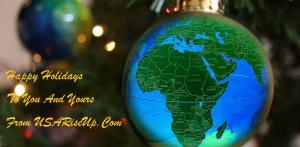
The air carries a thick scent of roasting meat as children scramble around the tree to see what Santa left for them. The adults look back on the passing of another year and forward to the changes of the next.
It's Christmas - a time for love and peace on earth, charity, celebration and togetherness.
Across the world, every culture celebrates in a different way - some have festivals based on national religions, others based on ethnic heritage and tradition. They may celebrate at the end of December, at New Years or at a different time each year – but one thing is for sure, there is no culture on earth that never takes time to relax, reflect and be together.
An estimated 2 billion people celebrate Christmas each year.
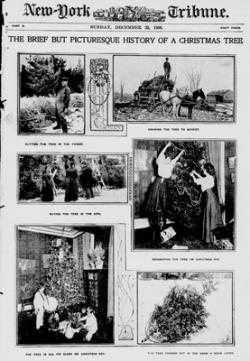 Its significance from a religious point of view varies wildly from household to household – and although its original meaning is to celebrate the birth of Christ – a great deal of the traditions that have grown up around the festival have little or nothing to do with the story of the Nativity.
Its significance from a religious point of view varies wildly from household to household – and although its original meaning is to celebrate the birth of Christ – a great deal of the traditions that have grown up around the festival have little or nothing to do with the story of the Nativity.
In no sense could you describe a unified ‘Christmas experience’ that encompasses every country and culture.
The United States and the United Kingdom share many similar Christmas traditions – the Christmas tree, usually an evergreen decorated with tinsel and often with an angel or a star on top. Christmas lunch is an elaborate affair with Turkey (once goose in England) and a range of seasonal trimmings.
Children are told all year that they must behave well or they will not receive gifts from Santa Claus (or Father Christmas), and on Christmas morning they receive wrapped presents under the tree in their family home.
There are a raft of traditional Christmas carols and songs, public performances in the street and for many, midnight mass offers the opportunity to welcome the festive season in with prayer and song in a local church, surrounded by family, friends and the community.
These traditions are mimicked across much of the English-speaking world, including the British Commonwealth. In southern hemisphere countries like New Zealand and Australia, Christmas falls in the middle of summer, and despite a winter theme still featured on many Christmas cards and decorations – the event is often celebrated by beach-side barbecues or outdoor events.
Christmas in the UK and USA has increasingly come under attack for pandering to consumerism and losing its true meaning. The arrival of Christmas wrapping and gift boxes on the supermarket shelves in August and a three month television advertising campaign by most major brands certainly lends credence to this argument.
 In much of continental Europe, Christmas Eve (24th December) is the most important day of the period – running counter to the traditional Christmas Day – centric (25th December) celebrations in the UK, USA and across much of the British Commonwealth.
In much of continental Europe, Christmas Eve (24th December) is the most important day of the period – running counter to the traditional Christmas Day – centric (25th December) celebrations in the UK, USA and across much of the British Commonwealth.
The Finnish people eat a special porridge in the morning and a meat based meal in the evening before exchanging gifts on the 24th of December – they also clean their houses in preparation for three holy days of holiday. They maintain Father Christmas lives in a northern part of the country called Korvatunturi, close to the Arctic Circle. People from across the world send letters to Santa in Finland, and there is even a theme park called ‘Christmas Land’ in the north of the country.
Noël is the French term for Christmas, and much like the Italians, the Spanish, Portuguese and other major Catholic countries across the continent, illustrates the same traditions of the people exchanging gifts and eating after a visit to Church on Christmas Eve. Decorations, song and traditions are relatively similar to the UK although tend to be less commercially driven.
Across Eastern Europe, the main Christmas meal usually consists of fish or pork with cabbage and potatoes. From Latvia to Slovakia, Estonia to Hungary there are subtle differences in observance – but largely a ‘European model’ remains.
For much of the world, Christmas is a chance to add their own cultural flair to a festival, either because they are Christian – or simply because they can.
With South and Central America being predominantly Roman Catholic, many of these countries tend to celebrate Christmas in a style similar to the USA where resources allow them to spend more money. In Brazil for example, they wait for Papai Noel to deliver the presents.
Christmas dinner is a big deal with some of the wealthier households sporting turkey or ham, while the poorer homes making do with chicken and rice.
Even countries that have no significant Christian tradition have become “Christmas-ised” over the years. The Far East has seen an explosion in Christmas shopping in December – despite for most, in countries like Japan – the 25th being a normal working day.
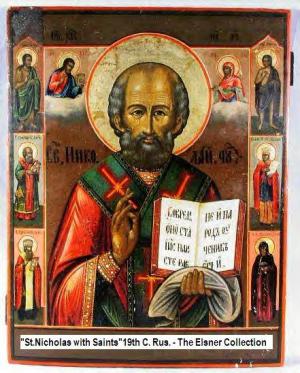 Across the world, the persecuted Christian communities’ observance of the festival has historically, and still today, represents their defiance against their oppressors.
Across the world, the persecuted Christian communities’ observance of the festival has historically, and still today, represents their defiance against their oppressors.
Russia_St._NicholasIn Soviet Russia, they banned Christmas but many people celebrated behind closed doors, seeing it not only as a chance to reaffirm their strong religious principles, but to also share the day with like-minded people who experienced the same grief and hope in equal measure.
And so this is Christmas – for some the embodiment of the most important moment in Christian history while for others the epitome of commercialism in a society that has lost its way – for a significant number in an increasingly secular world, however, it is a celebration that falls somewhere in the middle.
This rather whistle-stop tour of Christmas, highlights just how diverse one festival can be.
In a world with 200 countries, each with their own regional differences, a planet where nearly 7,000 recognised languages exist and countless dialects beyond those – the depth and diversity of seasonal celebrations is almost impossible to quantify.
It is with these facts in mind; this brief introduction to a few of the major seasonal celebrations around the world, that we should read as nothing more than a taste of the countless flavours our rich and diverse planet has to offer.
Some you may know, others are perhaps less familiar – but each and every event has a treasured cultural significance for those who observe them.
Hanukkah, celebrated in slightly different ways across the world, but its significance and relevance to Jewish people remains the same everywhere.
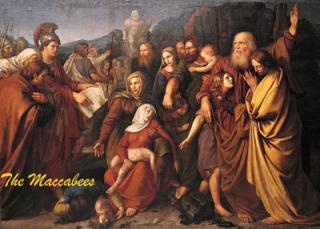 Part of the tradition of Hanukkah is a weeklong festival of lights, which commemorates the victory of the Jewish Maccabees over the Syrian Greeks more than a thousand years ago.
Part of the tradition of Hanukkah is a weeklong festival of lights, which commemorates the victory of the Jewish Maccabees over the Syrian Greeks more than a thousand years ago.
In his book, Faith in the Future, Britain's Chief Rabbi, Jonathan Sacks explains the significance: "That decision to resist and fight back ended in victory. Without it, Israel might have remained a Greek province, its religion extinguished. There would have been no Judaism, indeed no Christianity."
Falling on Kislev 25, a date in the nine-month Jewish calendar, the festival is at a different time each year and can take place anytime between the end of November and the final days of December.
A central symbol of Hanukkah is the Menorah, a candlestick, usually with eight branches. This object symbolises the miracle of light that is supposed to have happened after the Jewish victory when the candles burned for eight days in the temple after the Jews won back Jerusalem.
As part of this long-held tradition, they light a candle each night of the festival, which is accompanied by a blessing and song. As well as holding deep-rooted religious significance, Hanukkah is also a time of fun, family and feasting.
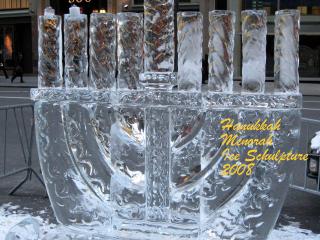 The dreidel is a small, often decorative, spinning top, normally enjoyed by children at this time of year. There are several traditional games played with the dreidel, mostly involving winning and losing tokens, coins or sweets.
The dreidel is a small, often decorative, spinning top, normally enjoyed by children at this time of year. There are several traditional games played with the dreidel, mostly involving winning and losing tokens, coins or sweets.
Fried foods are the most commonly consumed during Hanukah, again a reminder of the oil that helped the candles burn in Jerusalem. Enduring favourites include fried potato cakes and doughnuts, as well as dairy products and wine. Since the Middle Ages, it has been customary to exchange gifts during the festival, often pecuniary but also items with symbolic meaning.
Muslims regard the holy month of Ramadan, the ninth month of the Islamic calendar, as the most important and spiritually rewarding of the year.
Often called the month of the Qur'an, the event celebrates the night that the sacred text was revealed to the prophet Mohammed. Many Muslims attempt to recite as much of their holy text as possible and Mosques around the world will read one thirtieth of the Qur'an each night as part of Taraweeh prayers.
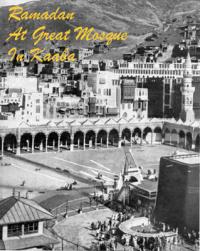 Although fasting is a part of Islamic tradition at several times of the year, throughout Ramadan Muslims fast the entire month during daylight hours each day.
Although fasting is a part of Islamic tradition at several times of the year, throughout Ramadan Muslims fast the entire month during daylight hours each day.
Eid ul Fitr occurs at the end of Ramadan; a festival that celebrates the end of fasting and thanks Allah for the strength and self-control he has provided them throughout this time. The event commences at the first sight of the new moon in the sky on, 1 Shawwal, a date in the Islamic calendar.
Marked by the wearing of special clothes and a celebratory atmosphere in decorated homes, the festival involves special outdoor services and in mosques as well as the first daytime meal in a month.
Eid ul Adha is a four-day public holiday in Islamic countries and in 2009, it fell in late November, but can fall in December, closer to Christmas. The festival remembers the willingness of Ibrahim to sacrifice his son on God's orders.
During the festival, Muslims sacrifice domestic animals, often sheep as a symbol of the sacrifice Ibrahim made. They split the animal into thirds and equally divide it between family, friends and the poor.
In many western countries, due to health and safety concerns they prohibit this practice under law. As with most religious celebrations, prayers, present giving and family gatherings mark the occasion.
The celebration of the shortest day in the year, often referred to as Yule, is one of the oldest winter festivals on record.
In ancient times, people had a close affinity with the sun, and in many cases even worshipped the entity that provided them with light and heat.
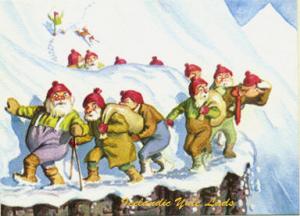 In Northern Europe, the Norse people would rest on the darkest day of the year, lighting many fires and, telling one another stories whilst drinking liquor – a kind of defiance of the darkness and celebration of the sun that they hoped would return.
In Northern Europe, the Norse people would rest on the darkest day of the year, lighting many fires and, telling one another stories whilst drinking liquor – a kind of defiance of the darkness and celebration of the sun that they hoped would return.
It is thought that the evergreen tree that many adorn with decorations at Christmas has its roots in the Yule traditions. The fact that a tree could produce life all winter, when all others were leafless and bare, and many animals were in hibernation and struggling for survival, gave it a special status.
It became symbolic of the battle against the elements and the recognition that life would return to the cold bare land in the spring.
Such Yule traditions continued across the world from the Romans to early Japanese, and still for many in the modern age form the intuitive basis for a break in the heart of winter, regardless of the pseudo-religious tag they may apply to it.
One of the more recent additions to the holiday calendar is Kwanzaa, 'a celebration of family, community and culture.'
Created in 1966 by author, political activist and later college professor, Ron Karenga, the festival honours African heritage and culture. Running from December 26 to January 1 each year, Kwanzaa has its roots in the black power movement of 1960s America, and was originally designed as an alternative to Christmas; a chance for African American people to have their own holiday.
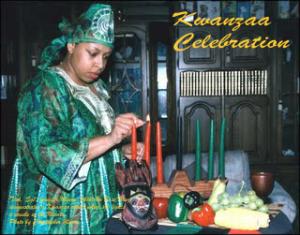 In an early text Karenga wrote, "Everyone but the 'negro' has a God that looks like him. Christianity is a white religion." This bold position marginalised the festival and proved divisive, not only alienating many white Christians but also limiting the appeal of the festival amongst African-Americans, many of whom believed in Christianity.
In an early text Karenga wrote, "Everyone but the 'negro' has a God that looks like him. Christianity is a white religion." This bold position marginalised the festival and proved divisive, not only alienating many white Christians but also limiting the appeal of the festival amongst African-Americans, many of whom believed in Christianity.
By the second half of the 1990s, Kwanzaa had evolved into a more inclusive celebration, rebranding itself as a family orientated celebration of common principles and humanism. Its focus still remains on the black history, but now with slightly softened edges, the festival is estimated to be celebrated by somewhere between four and 25 million people, depending on whose figures you use.
In 1997, the US Postal Service issued the first Kwanzaa stamp in recognition of the growing popularity of the festival. In 2004, a second stamp, this time designed by the artist Daniel Minter went into circulation.
That same year, President George W Bush issued a Christmas message to those who celebrate the festival, summarising its principles, “Kwanzaa celebrations provide an opportunity to focus on the importance of family, community, and history, while reflecting on the Nguzo Saba or seven principles of African culture. These principles emphasize unity, self-determination, collective work and responsibility, cooperative economics, purpose, creativity, and faith."
Just as no Christmas celebration would be complete without a tree, the Kinara, a seven pronged candleholder acts as the central focus of Kwanzaa celebrations. The Kinara holds one black candle, representative of the people, three red candles that commemorate their struggles and three green that usher in the bright future.
In a ceremony similar to the Menorah at Hanukah, there is one candle lit every day throughout the festival. Many people decorate their homes with traditional African themes throughout Kwanzaa, wear African dress and listen to music from across the continent.
The festival culminates in a meal with family and friends who exchange gifts.
